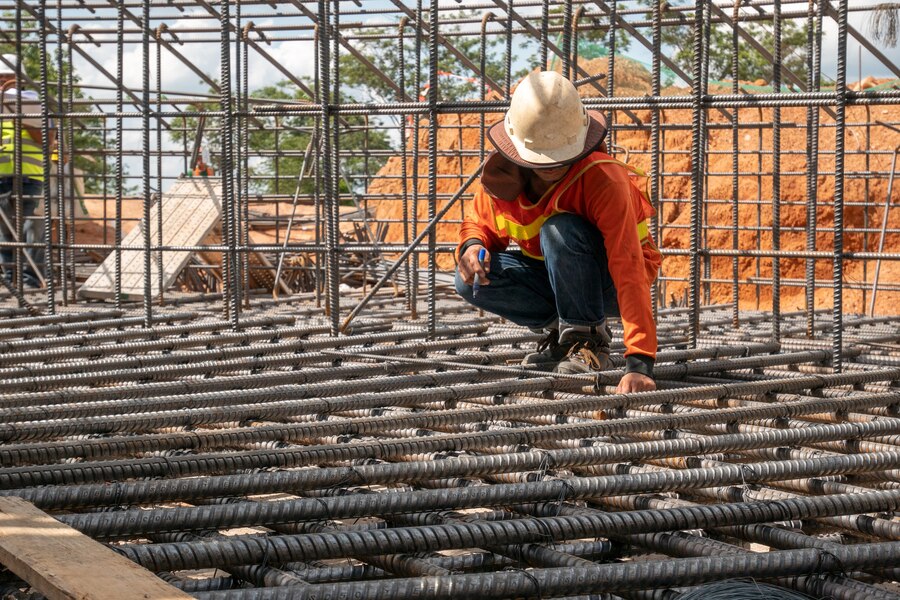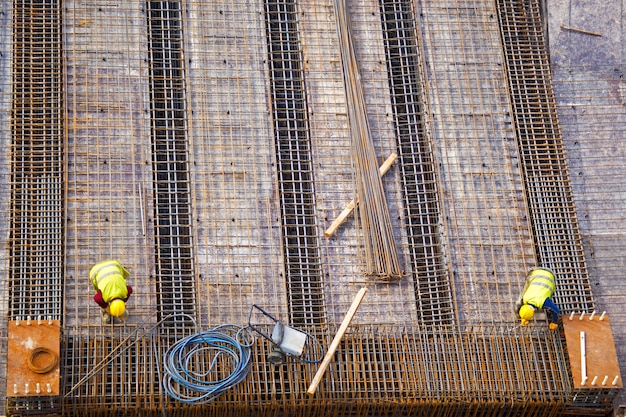5 Benefits Of Using Fiberglass Rebars In Construction Projects
5 Mins Read
Published on: 28 February 2024
Last Updated on: 14 October 2024

toc impalement
Glass fiber reinforced polymer (GFRP) has gained popularity in construction applications where corrosion resistance is a major concern.
Corrosion is a costly problem, with annual direct costs exceeding 2.2 trillion US dollars. Therefore, fiberglass rebar, a type of GFRP and a reinforcing material used in concrete helps replace traditional steel-type reinforcement.
Moreover, construction projects have used fiberglass rebar, made from fiberglass rovings and a vinyl ester resin, for over 20 years with excellent results.
Thus, GFRP is a cost-effective and better solution for construction companies. It addresses the issue of acid rain, which leads to corrosion and weathering, which can lead to structures losing their strength.
Additionally, GFRP rebar empowers structures to remain rust-free, offering numerous advantages over traditional steel-type reinforcement. Proper corrosion protection methods can save significant money on projects.
Let us explore why every construction project must move to fiberglass rebars for better results.
What Are Glass Fiber Reinforced Polymer Rebars?

GFRP, or glass fiber reinforced polymer rebar, is a composite material becoming increasingly popular among construction companies due to its superior properties.
It is more cost-effective than traditional materials like steel and provides better solutions to the challenges faced by the construction industry.
One of the major issues structures face is corrosion, which is often caused by natural phenomena like acid rain.
Weathering can also weaken structures over time. GFRP rebar is an effective solution to these problems as it offers enhanced resistance to rust and weathering.
Therefore, using GFRP products in construction offers numerous benefits, including increased durability, improved strength, and reduced maintenance costs.
Why Should You Use Fiberglass Rebars For Construction?

Given below are some of the major reasons why you should use fiberglass rebars in your construction projects—
Durability
GFRP is a construction material that saves the construction industry billions of dollars annually by reducing maintenance costs.
These Fiberglass rebars are resistant to chemicals and harsh environmental conditions due to their composition of glass fiber-reinforced polymer.
Moreover, GFRP is impervious to corrosion in chloride-rich environments. This makes it ideal for marine or waterside applications like water tanks, wastewater treatment facilities, bridges, and retaining walls.
GFRP has gained popularity over steel in applications where corrosion is a major threat.
Fiberglass rebar offers a comprehensive corrosion solution, as concrete structures reinforced with GFRP do not react to chloride-rich environments.
Also, this reinforcement is an economical way to achieve a long project service life. Therefore, using GFRP can save money in the long term and ensure your project is completely rust-free.
Strength
GFRP, the composite material, consists of a polymer matrix and reinforcing fibers that include the following:
- Carbon,
- Glass.
- Gramid.
This is why it is popular as an exceptionally strong and durable construction is a popular choice in construction material.
Moreover, it offers a high strength-to-weight ratio, corrosion and fatigue resistance. Therefore, these fiberglass rebars can withstand high loads and stresses, making them a preferred option for building bridges, offshore oil rigs, and buildings.
Additionally, GFRP enhances the mechanical support provided by GFRP rebars, which play a crucial role in concrete structure strength.
Construction companies and clients prioritize strength, and FRP’s unique properties allow for lighter and more efficient structures, reducing overall cost and environmental impact.
Cost-Effectiveness
GFRP rebar is a great alternative to steel in the construction industry as it is both cost-effective and environmentally friendly.
Its low maintenance costs make it an economically viable construction solution. Moreover, in environments where steel rebars can cause damage due to corrosion, GFRP becomes a popular choice.
GFRP’s rust-free nature makes it an attractive bridge choice, as governments don’t have to spend much on maintenance.
Although FRP materials may initially be more expensive than traditional materials like steel or concrete, their prefabricated components, reduced waste, and lightweight nature can lower overall costs.
Additionally, FRP resists corrosion, rot, and insect damage, reducing maintenance and repair costs. Furthermore, its insulation properties lead to energy savings, especially in extreme temperatures, contributing to lower energy bills and a smaller carbon footprint.
Thus, GFRP offers a cost-effective and environmentally friendly alternative to steel in the construction industry.
Sustainability
FRP, or fiber-reinforced polymer, is a construction material that recently gained popularity due to its unique properties.
It is an eco-friendly alternative to traditional materials like steel and concrete, crafted from recycled materials, reducing its carbon footprint.
In addition to being sustainable, FRP is lightweight, which increases energy efficiency and lowers transportation costs. It is also highly durable and corrosion-resistant, making it an excellent choice for long-lasting and low-maintenance projects.
Therefore, by using FRP, builders can contribute to a more sustainable future and maintain the structural integrity of their projects. This versatile and cost-effective material can fit in with various applications, including bridges, buildings, pipes, and tanks.
Versatility
Fiberglass rebars are a great alternative to traditional reinforcement materials. They offer superior durability and strength while being lightweight and easy to transport and handle.
They are also resistant to corrosion and chemicals, making them perfect for harsh environments.
In addition, they have high tensile strength, which allows them to withstand heavy loads without breaking. Regarding construction projects, fiberglass rebars are versatile and cost-effective alternatives to traditional reinforcement materials.
They can be easily cut and molded into various shapes, reducing labor costs and construction time.
Their corrosion-resistant properties make them suitable for harsh environments or projects where traditional steel rebars may rust. This makes fiberglass rebars a popular choice among engineers and contractors.
Read Also: Six Useful Tips On How To Organize Your Construction Business
Get GFRP Rebars For Your Project
FRP, a composite material, is made by reinforcing plastic resin with fiberglass. It is renowned for its strength and durability, making it a popular choice for construction and infrastructure projects.
It is also much lighter than steel and concrete, making it easier and more cost-effective to transport and install.
The design flexibility of FRP allows for intricate and unique designs to be created. Overall, the science behind FRP is fascinating, and it’s no wonder why it’s becoming increasingly popular in the construction industry.
FRP is reshaping the industry with its many advantages and changing how we think about traditional reinforcement materials. As technology progresses, it’s exciting to think about what other advancements are around the corner.
Read Also:


















Comments Are Closed For This Article